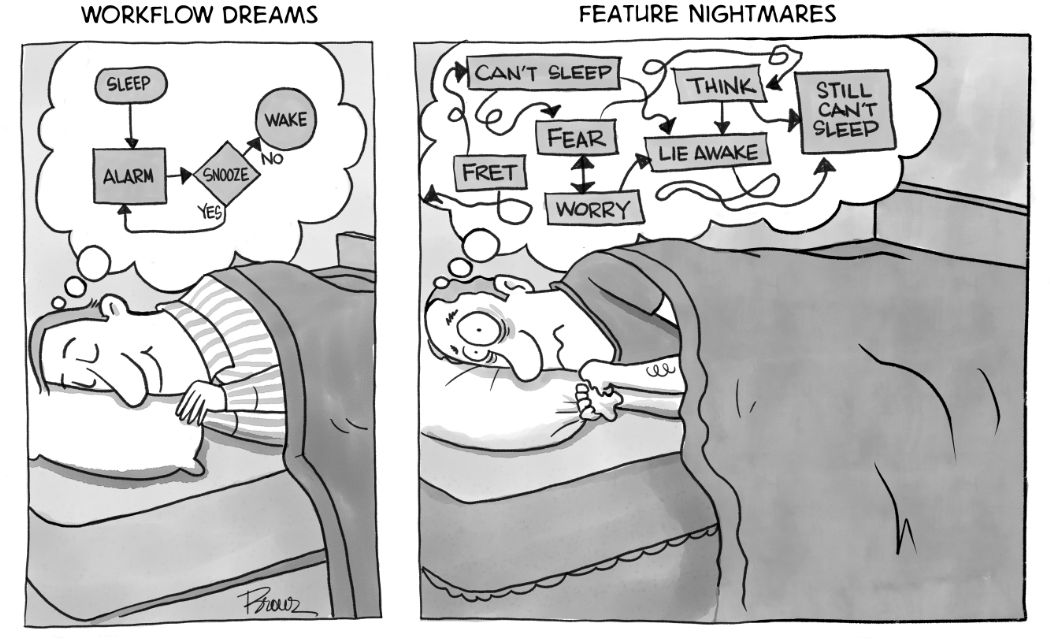Beethoven’s Fifth is one of the most recognizable symphonies in music. It begins with four simple notes—three Gs and one long F. The power and complexity come later, but they are all built on these four notes.
The same is true for every connected product business and the orchestration of its many systems and processes that drive outcomes and transformation. This symphony starts with five fundamental notes: Device Provisioning, Wellness Monitoring, Software Updates, Telemetry Data Consumption, and Federation.
Without these core elements, there are no business applications, analytics, or AI/ML. Implementing the foundational device and data management elements as workflows enables these more advanced services. Like the different movements in a symphony, workflows elegantly tie everything together into a recognizable, repeatable, and scalable whole.
At EdgeIQ, we refer to device management workflows as DeviceOps for Device Operations. DeviceOps is not a set of features but interrelated and interdependent workflows.
DeviceOps as Workflows
Fleet Management – Beyond a simple system of record for your devices, Fleet Management is a set of workflows that marries that system of record with the movement of devices from inventory to customer ownership, with unique configurations and activations, maintenance modes, and eventually decommissioning. All of these states involve workflows with multiple third-party and internal systems.
Account/Organizations – Many see this as simply role-based access and permissions management. However, these permissions extend into multi-tier hierarchies and can involve SSO services, unique configurations, application access based on license entitlements, customer-specific SLAs, etc.
Provisioning and Configuration Management – In your world, this is not just zero-touch configuration of connection parameters. Your business has evolved to a more complex set of First Connection workflows. Customers have unique device configurations. They download unique applications to the edge based on what they have bought. There may be multiple data paths for data federation. All of these are interdependent workflows based on who the customer is, what they purchased, and how they expect the devices to be managed.
Wellness Monitoring – In the past, simple online/offline status with an anomaly alert was sufficient. Today, wellness monitoring includes connectivity status and a lot of additional data about device performance, CPU, battery, memory, and limitless other conditions. Alerting is not enough anymore; you need workflows to create and track service tickets if problems are detected. Conditions may even initiate an advanced diagnostics and remediation workflow.
Software Updates – If we’ve learned anything from the July 21 Crowdstrke update debacle, it’s that there is no such thing as a routine software update. Software updates, especially for connected products, are pretty complex. Complexity can arise from factors like customer-specific configurations, different services running on devices, intermittent connectivity, inability to support updates during business operating hours, inconsistent OS and firmware baselines, and much more. All of these complexities must be factored into how software updates are executed. Software update workflows must begin with target sample cohorts and have built-in observability services, auditing, retry management policies, and rollback capabilities. These are not merely features. They are workflows that require purpose-built orchestration capabilities, not re-purposed IT or DevOps tools.
DataOps as Workflows
Managing the lifecycle of a connected product is much more than simple device management. The same applies to Data Operations (DataOps) in the connected product domain. DataOps is much more than connecting a device to a network and pointing data to a cloud service. DataOps has significant dependencies on the foundational DeviceOps workflows, yet It is also the foundation for much more complex workflows supporting device, system, and service Observability, analytics, reporting, and visualization. These more advanced services are the subject of a future blog, though.
Data Ingestion and Normalization – In the early days of connected products, embedded software engineers could create simple telemetry features to send data over a particular network to a specific database or service in the cloud. Today, just the ingestion and normalization is a workflow. Downstream applications need data ingestion as an abstraction because data streams and devices must be polled sometimes. Connected products are only intermittently connected and may require intelligent buffering and storage before sending them. Then there’s the issue of normalizing data, mostly into JSON, so that integrated services can interpret and act. Dozens of different device and network protocols also must be factored in. Many of these are defined in device profiles and configurations, which means that data workflows must be integrated, or depend on device workflows.
Data Federation and Storage – There are infinite options for what to do with device data as it is generated and consumed. For some, sending all data from the edge to a single cloud repository may be the best solution. From there, it can be parsed, federated, and stored. In some cases, organizations will want to federate normalized data to multiple services simultaneously. Wellness reports may go to the core operations platform. But telemetry, or operational data, will go to business applications.
In some cases, end customers consume data. The multitude of possible destinations for data, the parallel needs for long-term and short-term data storage policies, and the complexity of data structures require intelligent orchestration. Again, these workflows are interdependent with all of the workflows discussed above and many others we haven’t even touched on yet.
The symphony, your connected product business, must be executed as the elegant orchestration of workflows - not just a random collection of notes. Unfortunately, many organizations see all of this as just a list of feature requirements to be built in-house or cobbled together from disparate point solutions. This results in technology and operational silos and business discord, not harmony. Organizations must embrace workflow-centric workflows and create an orchestration framework that achieves transformational outcomes.


